We may receive a commission when you use our affiliate links. However, this does not impact our recommendations.
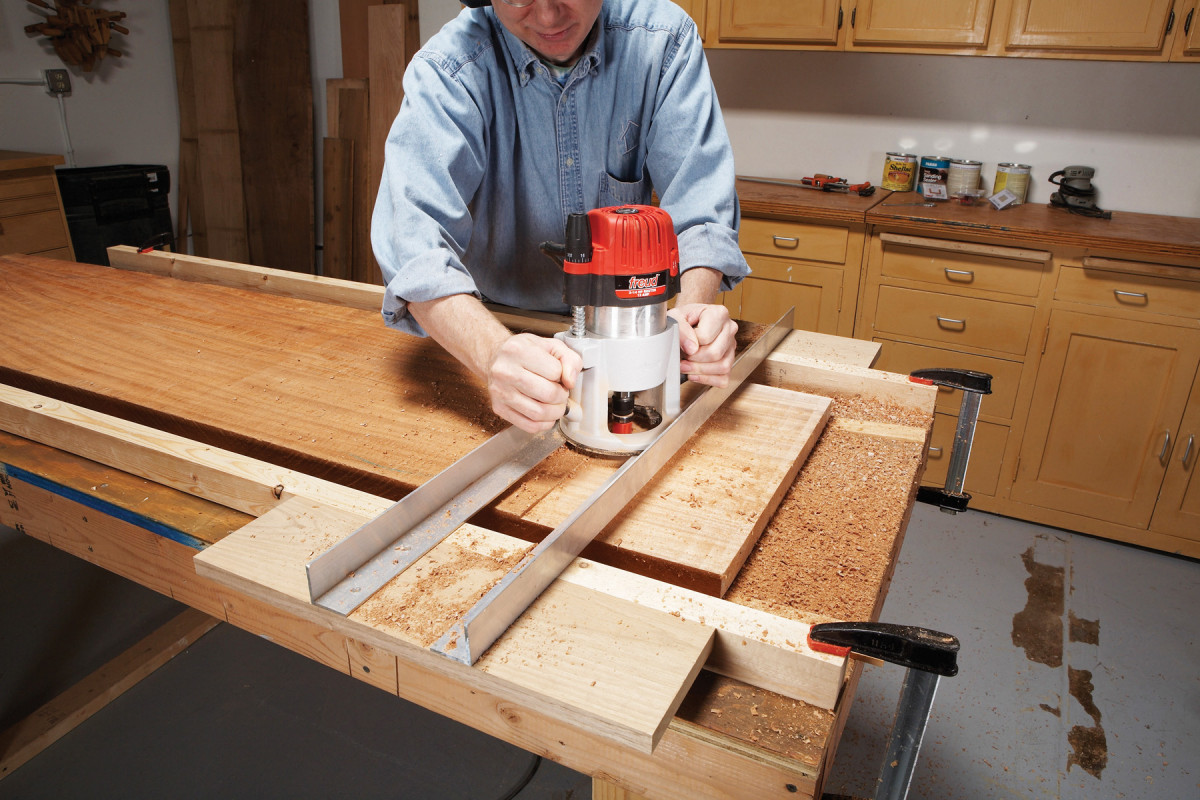
Flattening Wide Boards
A huge, wide board makes a stunning tabletop. If it won‘t fit through your planer, flattening that board can be a real chore with a belt sander. It’s much easier to use your router.
To get started, you’ll need a large, flat surface, such as a big workbench or a hollow-core door. Lay the board on the bench and place shims underneath the board so it won’t rock. Next, mill two guide boards about 1-ft. longer than your workpiece. Screw or clamp them to the bench top an equal distance apart. Make a sliding carriage for your router from two 1-in. by 1-in. pieces of aluminum angle, and fasten them to two cleats.
Install a large-diameter bit in your router and you’re ready to go. Slide the router back and forth on the carriage, then advance the carriage down the length of the board.
Two Featherboards Ensure Accuracy
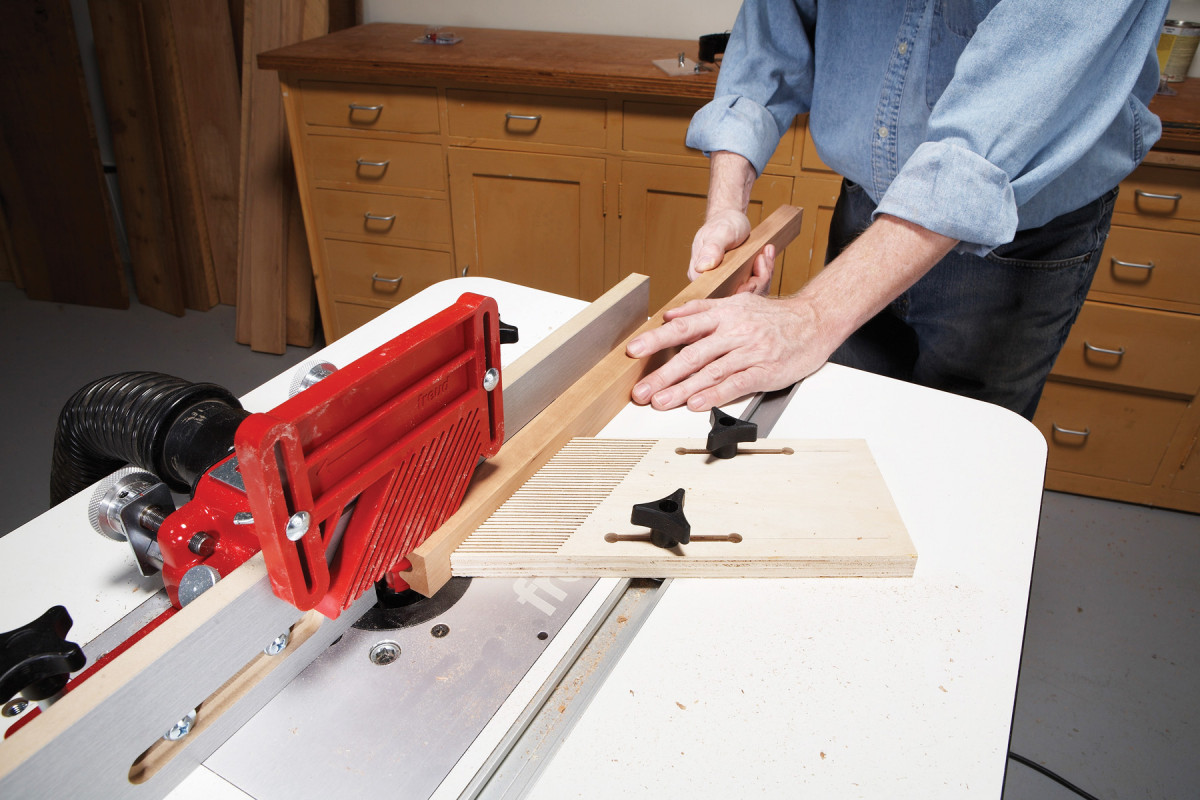 It’s best to use two featherboards when cutting narrow moldings in order to get a straight, smooth cut. However, it’s almost impossible to safely feed the stock all the way through. The solution: make the molding extra-long and leave some uncut wood on the end, to serve as a handle. When you’ve routed as far as possible, turn off the router, remove the piece and cut off the handle.
It’s best to use two featherboards when cutting narrow moldings in order to get a straight, smooth cut. However, it’s almost impossible to safely feed the stock all the way through. The solution: make the molding extra-long and leave some uncut wood on the end, to serve as a handle. When you’ve routed as far as possible, turn off the router, remove the piece and cut off the handle.
A Better Way to Cut Small Moldings
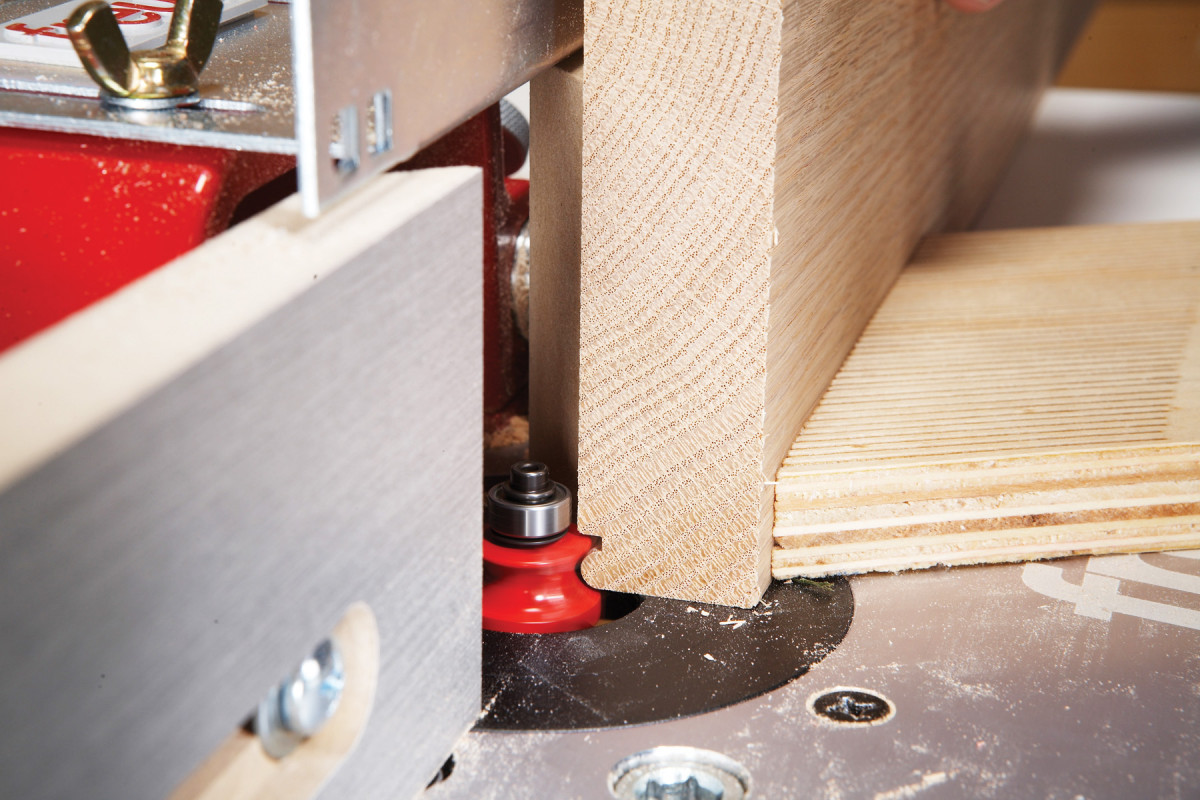
1. It’s hard to keep thin or narrow stock from chattering while its being cut on the router table.
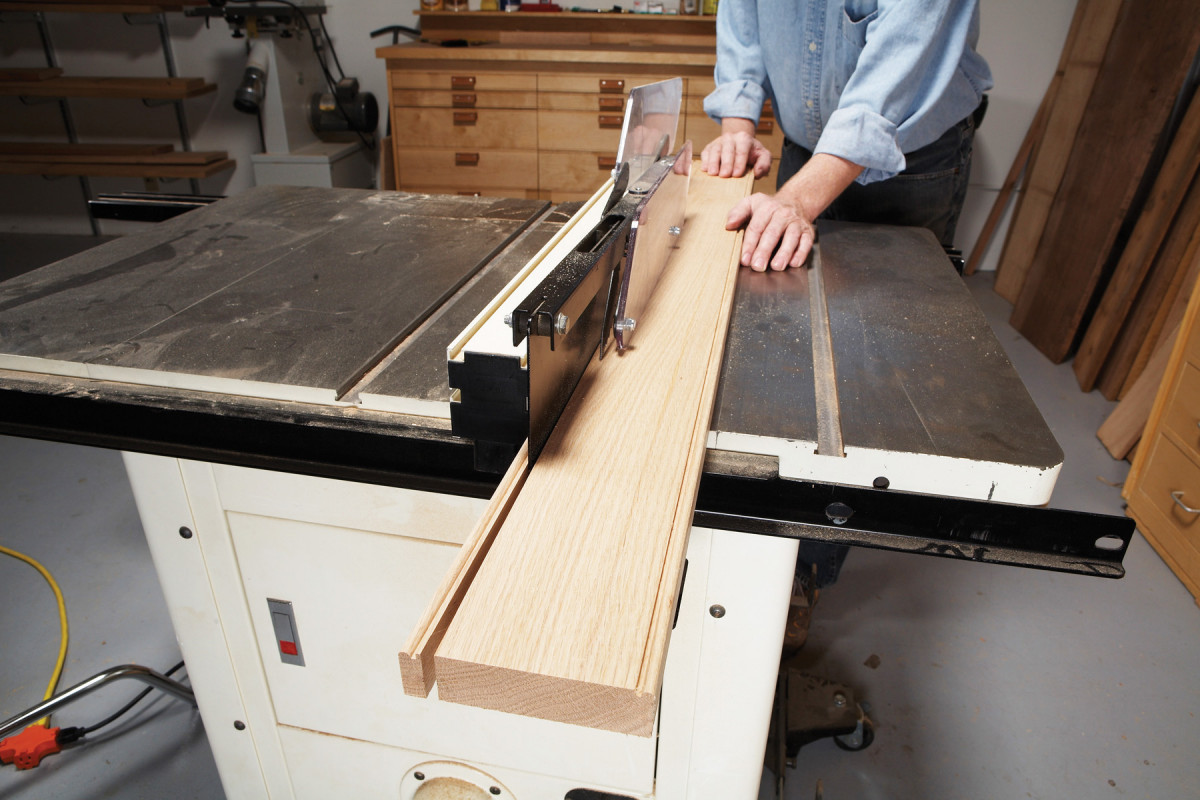
2. For narrow strips such as this bead molding, it’s safer and easier to rout the profile on a wide board (Photo 1), then cut off the shaped edge on the tablesaw (Photo 2).
Straight Edges Without A Jointer
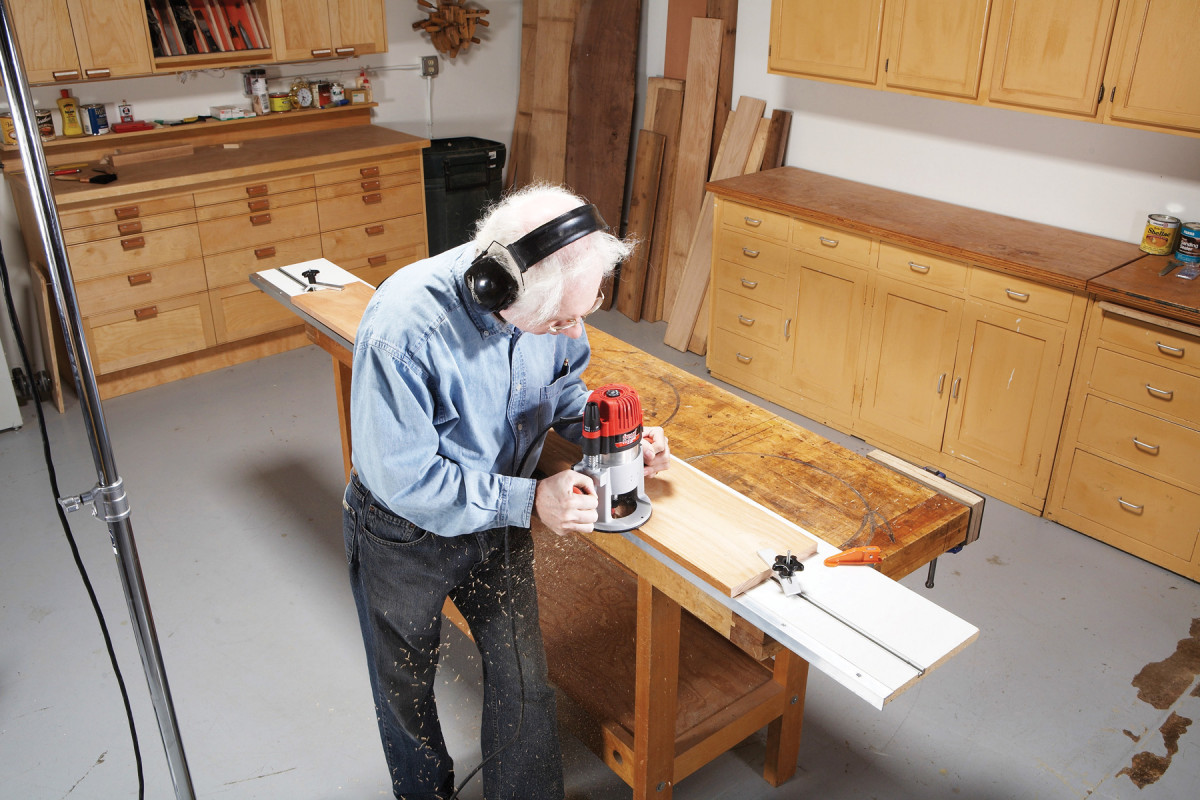 Here’s a device for jointing boards using only a router. It’s a long straightedge equipped with clamps for holding a workpiece plus a durable metal edge for guiding a flush-trim bit. When not in use, it easily stores against a wall.
Here’s a device for jointing boards using only a router. It’s a long straightedge equipped with clamps for holding a workpiece plus a durable metal edge for guiding a flush-trim bit. When not in use, it easily stores against a wall.
To make the straightedge, you’ll need an 8-ft.-long, 12-in.-wide piece of plywood, such as melamine shelving, an 8-ft.-long piece of 1-in. by 1-in. aluminum angle, 8 ft. of T-track, and some commercial clamps made for T-track or their shop-made equivalents (see Source, below).
Rout the plywood so the T-track and aluminum angle are flush with its surface. Epoxy the T-track into its groove; drill and countersink holes in the angle so you can screw it to the plywood.
To use the jig, clamp your board so its uneven edge just overhangs the straightedge, install a bottom-bearing flush-trim bit in your machine, and rout away.
Chip-Free Bits
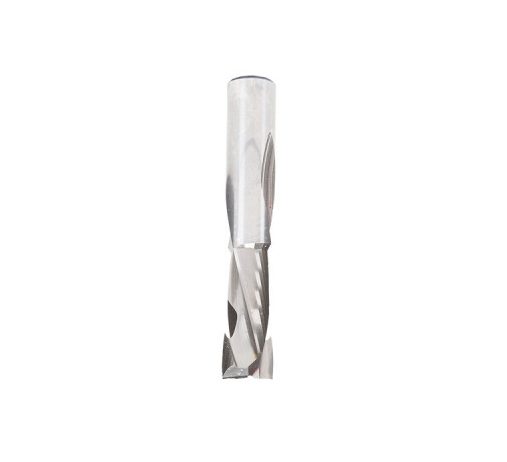
Spiral bits often make a smoother, more accurate cut than straight bits. An up-cut bit pulls chips up and out, making it perfect for cutting mortises in solid wood. A down-cut bit pushes chips downward, ideal for making chip-free dados in plywood and melamine. (Down-cut bits are not recommended for use in a router table, however, because they can push the workpiece up off the table.) A compression bit has spirals running both ways, up and down, pulling chips toward the middle of the bit. It’s the best bit for routing the edges of plywood or melamine- –you’ll get a chip-free surface on both sides.
Shape Thick Parts in Two Steps
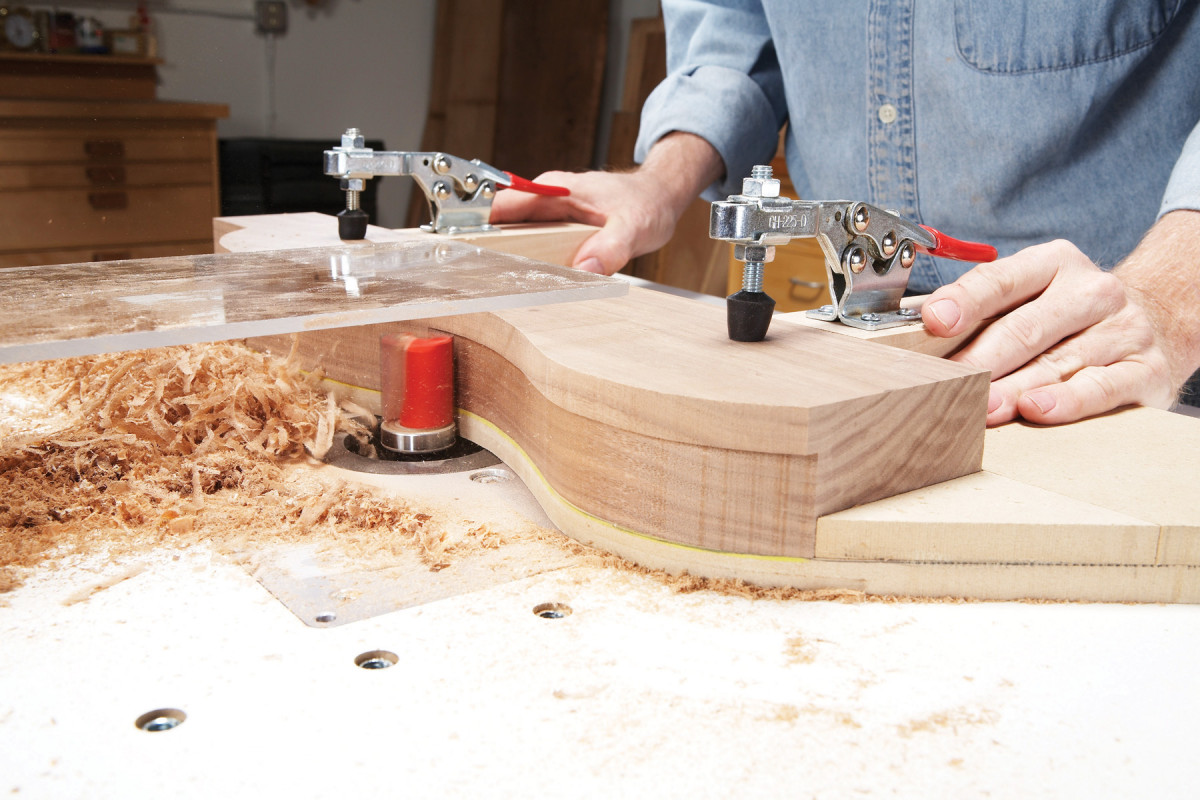
1. The best way to make identical parts is to use a template and a top-bearing pattern bit. Most pattern bits aren’t very long, however, so you might think that you can’t use one for thick parts.
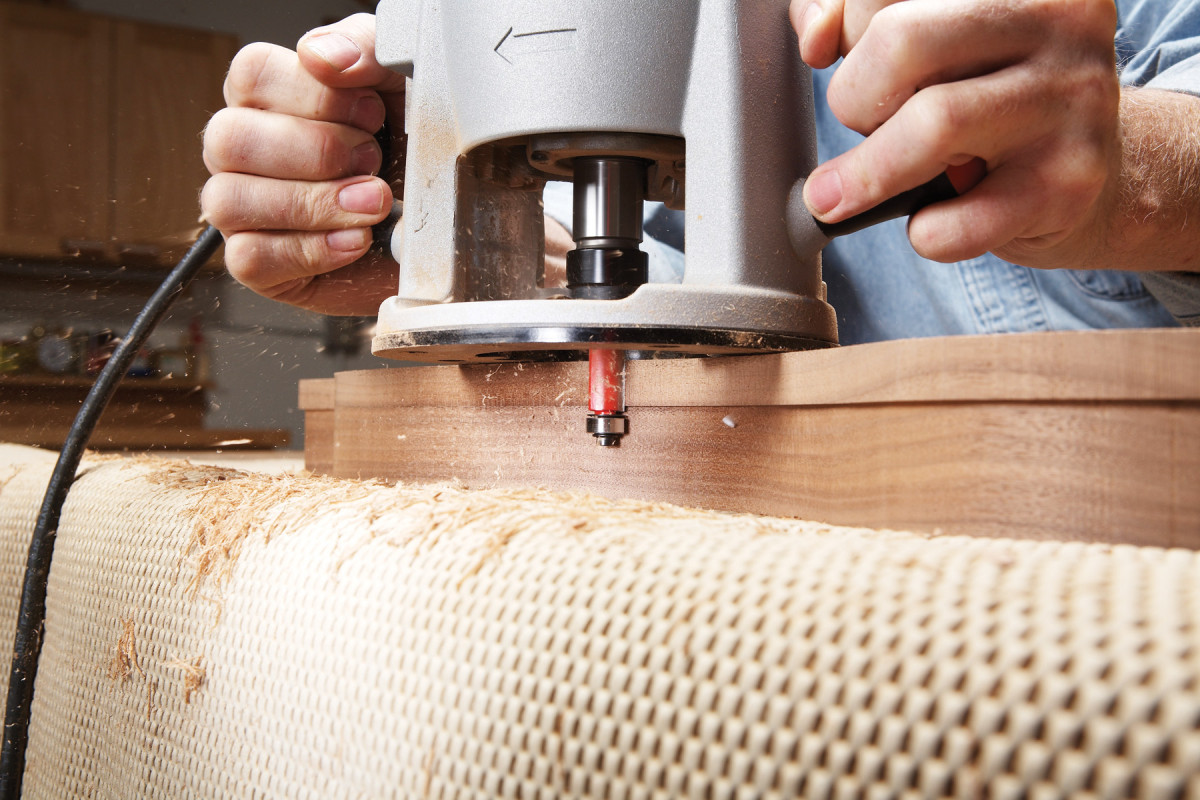
2. You can, and here’s how: First, rout the bottom half of the part (Photo 1). Second, remove the part from the template and install a bottom bearing flush-trim bit in your router (Photo 2). Adjust the bit’s height so its bearing rides on the surface created by the pattern bit, and you’re all set.
Perfect Miter Joints
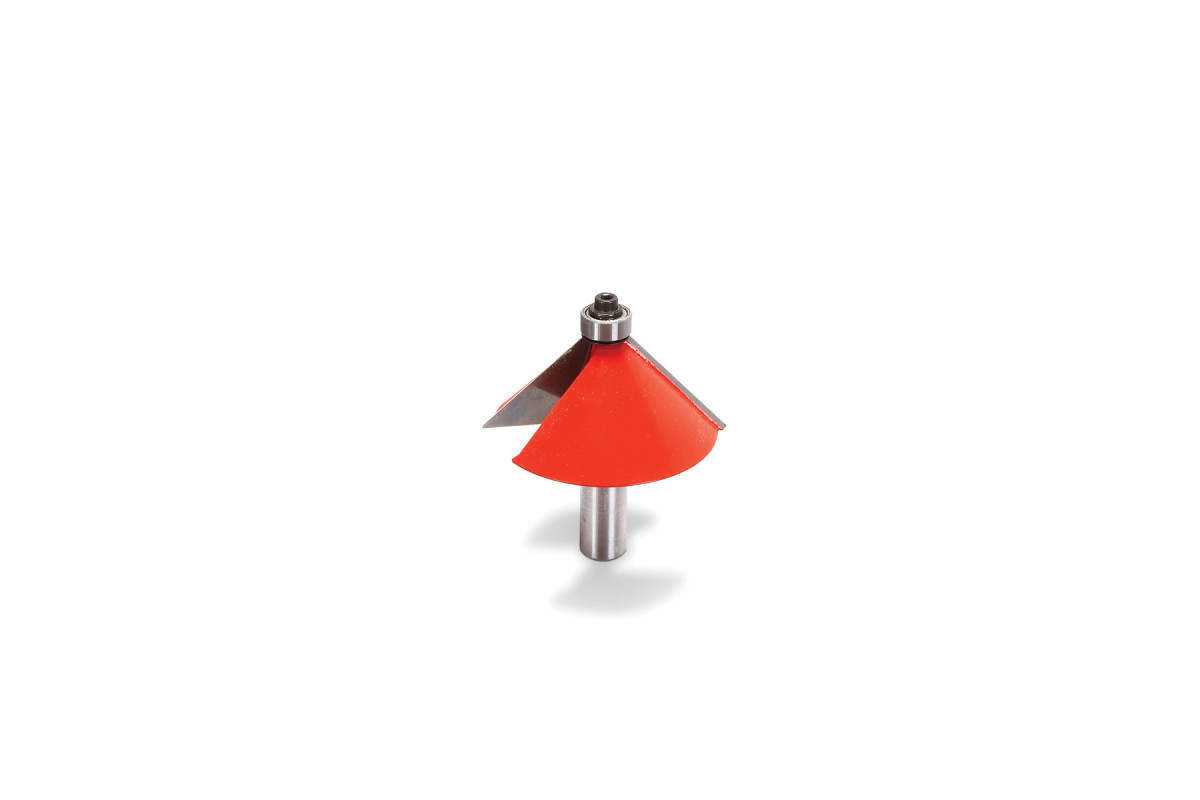 Many contractor’s-type saws don’t do a very good job cutting miters when the blade is tipped over to 45 degrees. The blade shifts out of alignment just enough to produce a burnt or out-of-square edge. If you’ve experienced those problems, try using a chamfer bit, which always cuts a precise 45-degree angle. Chamfer bits come in a variety of sizes. Here are a few tips that will improve your results:
Many contractor’s-type saws don’t do a very good job cutting miters when the blade is tipped over to 45 degrees. The blade shifts out of alignment just enough to produce a burnt or out-of-square edge. If you’ve experienced those problems, try using a chamfer bit, which always cuts a precise 45-degree angle. Chamfer bits come in a variety of sizes. Here are a few tips that will improve your results:
 Use your tablesaw or bandsaw to remove most of the waste before you rout. Your chamfer bit will perform best when it’s only removing a small amount of wood. • Cut your router table’s fences to make a zero-clearance opening around the bit. This prevents the workpiece from tipping into the bit as you cut.
Use your tablesaw or bandsaw to remove most of the waste before you rout. Your chamfer bit will perform best when it’s only removing a small amount of wood. • Cut your router table’s fences to make a zero-clearance opening around the bit. This prevents the workpiece from tipping into the bit as you cut.- Hold a backerboard behind the workpiece to prevent blow-out. When you set up your router table, aim for leaving a point on the end of the workpiece, without shortening its length. To get there, you may adjust your fence or the bit’s height. Either way, the adjustment should be very small–but once you’re set, miters are fast and easy to cut.
Four Dado Sizes With One Bit
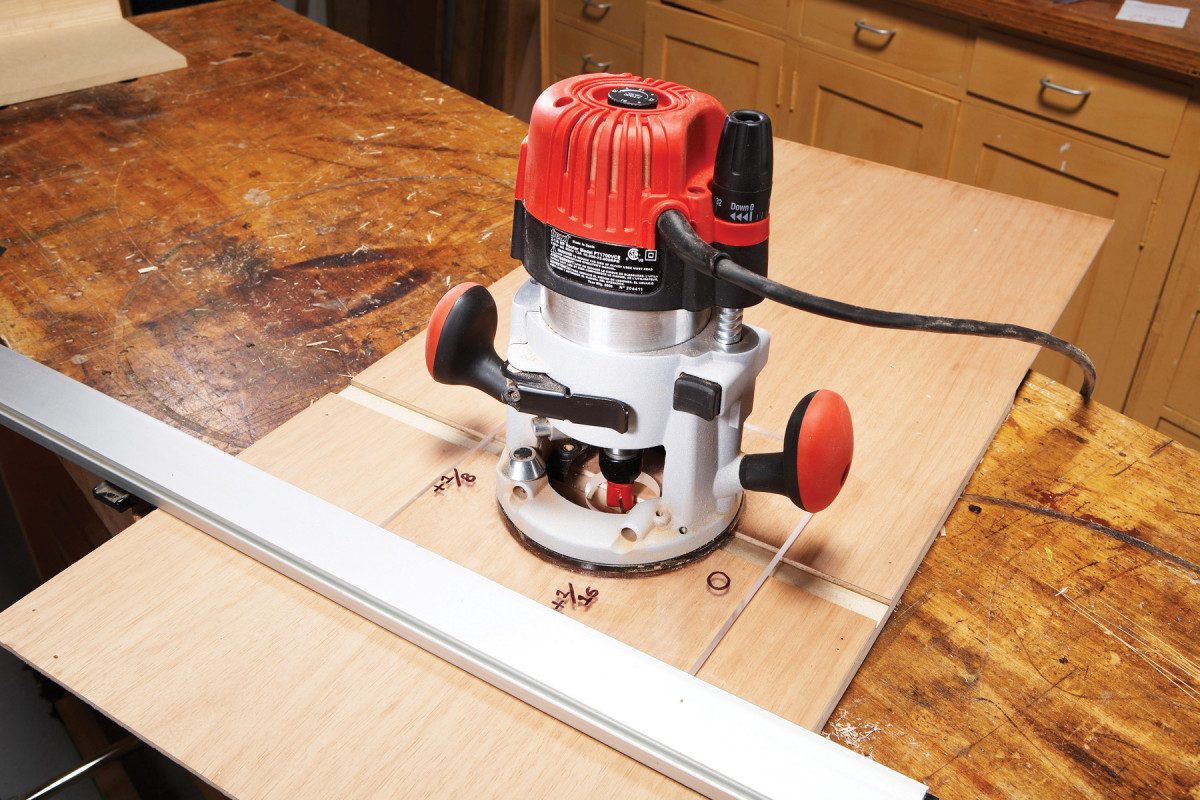 Here’s a custom-made baseplate that saves setup time. Using just one bit, you can make four different dados.
Here’s a custom-made baseplate that saves setup time. Using just one bit, you can make four different dados.
Each side of the baseplate is progressively 1/16-in. farther away from the bit. You make one cut at the “0” setting, then rotate the router and baseplate to enlarge the dado. For example, if you use a 1/2-in. bit, you can also make 9/16-in., 5/8-in., and 11/16-in. wide cuts. Alternatively, you can make the baseplate with 1/32-in. or 1/64-in. progressions for fitting undersized plywood into dados.
Making the baseplate requires accurate layout. It’s best to make it slightly oversized at first and mount it on your router. Nibble away at its edges on the tablesaw until the dimensions are perfect.
Square Up A Large Top
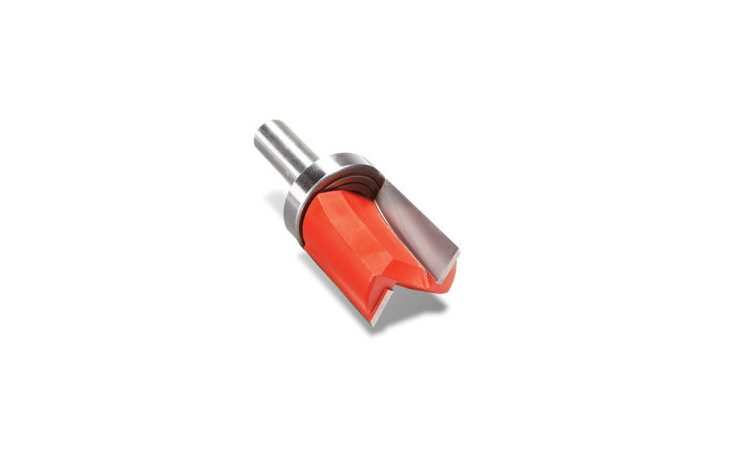
How do you trim the end of a top that’s too large to crosscut on the tablesaw? Simple: use a router and a large pattern bit.
Before you rout, use a jigsaw to cut the end of the top close to its final length. (The less end grain you rout, the easier the job will be.) Next, find a piece of plywood or fiberboard that has two adjacent factory edges. This piece guides the router; the factory edges guarantee that your top will be square. The guide piece should be 2 to 3-in. longer than the width of the tabletop.
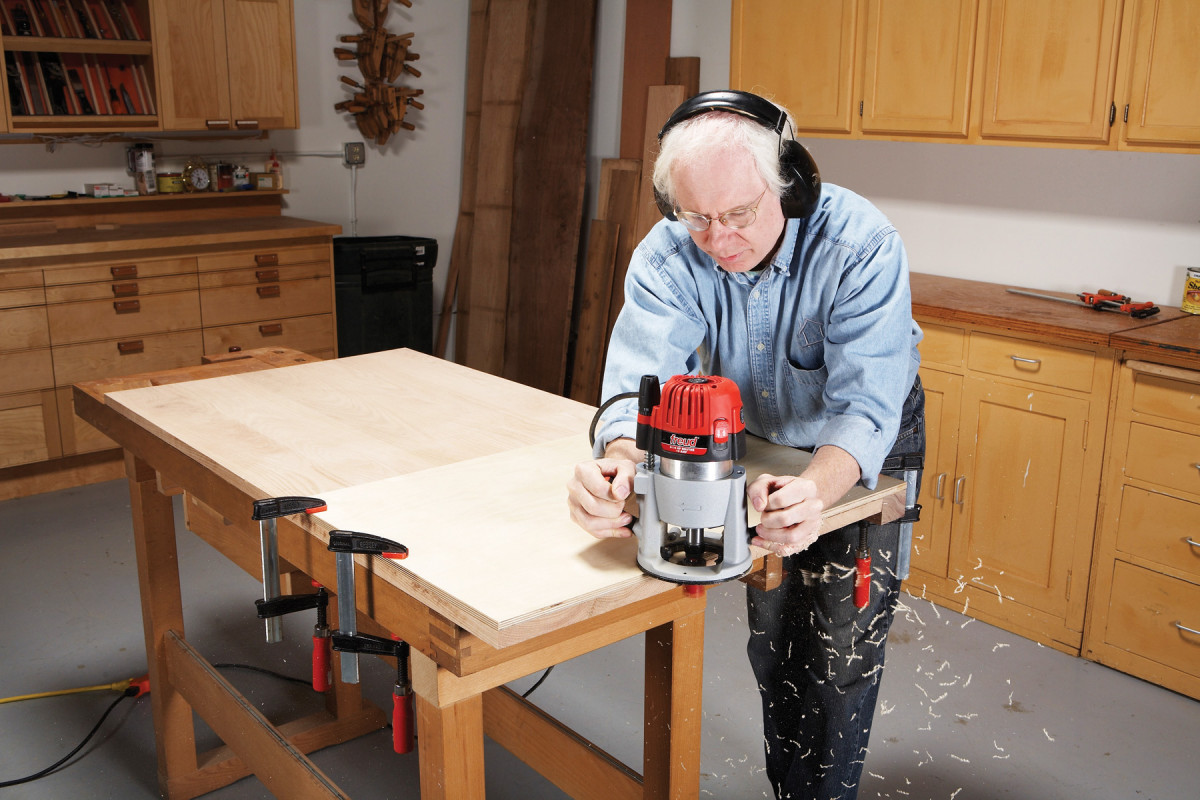 Place the guide piece on a pencil line indicating the end of the tabletop. Clamp one side of the guide piece flush with the long edge of the top. Clamp a sacrificial block on the opposite side, tight to the tabletop, to prevent the end grain from splintering at the end of the cut.
Place the guide piece on a pencil line indicating the end of the tabletop. Clamp one side of the guide piece flush with the long edge of the top. Clamp a sacrificial block on the opposite side, tight to the tabletop, to prevent the end grain from splintering at the end of the cut.
You can use a standard 1/2-in. flush-trim bit for this technique, but that requires placing the guide piece under the top, which can be a hassle. A pattern bit makes setup much easier. You’ll get the best results by using a pattern bit that’s at least 1-in. dia. It makes a smoother cut in end grain than a bit with a smaller diameter.
Rigid Routing Sled
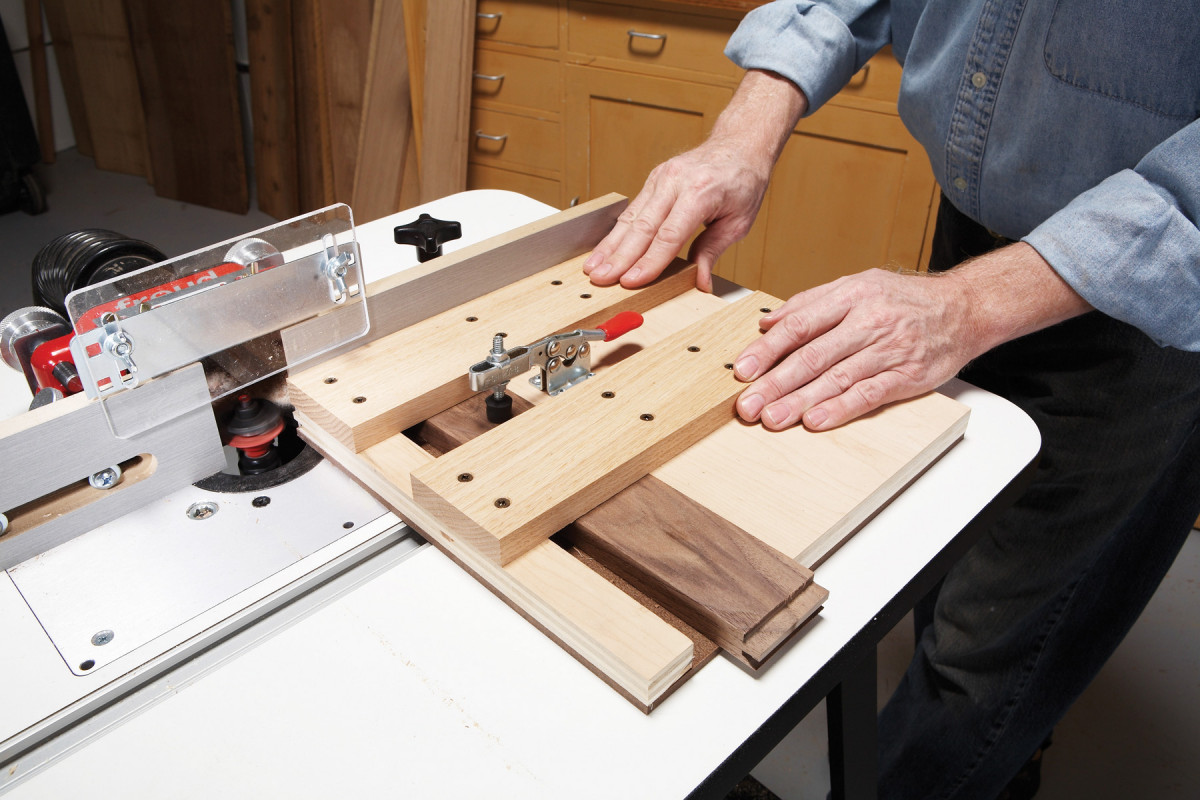 You can’t beat a sled and a toggle clamp for coping the ends of rails and stiles, but many sleds have a subtle problem that produces a misaligned joint. The problem is with the base, which is typically 1/4-in. thick. Pressure from the toggle clamp causes the base to bend, resulting in a rail that’s not evenly aligned with its mating stile. The answer is to add a board at the front of the sled, plus two top boards that bridge over the workpiece. This produces an absolutely rigid sled, and perfect joints.
You can’t beat a sled and a toggle clamp for coping the ends of rails and stiles, but many sleds have a subtle problem that produces a misaligned joint. The problem is with the base, which is typically 1/4-in. thick. Pressure from the toggle clamp causes the base to bend, resulting in a rail that’s not evenly aligned with its mating stile. The answer is to add a board at the front of the sled, plus two top boards that bridge over the workpiece. This produces an absolutely rigid sled, and perfect joints.
Cutting Tenons on Long Boards
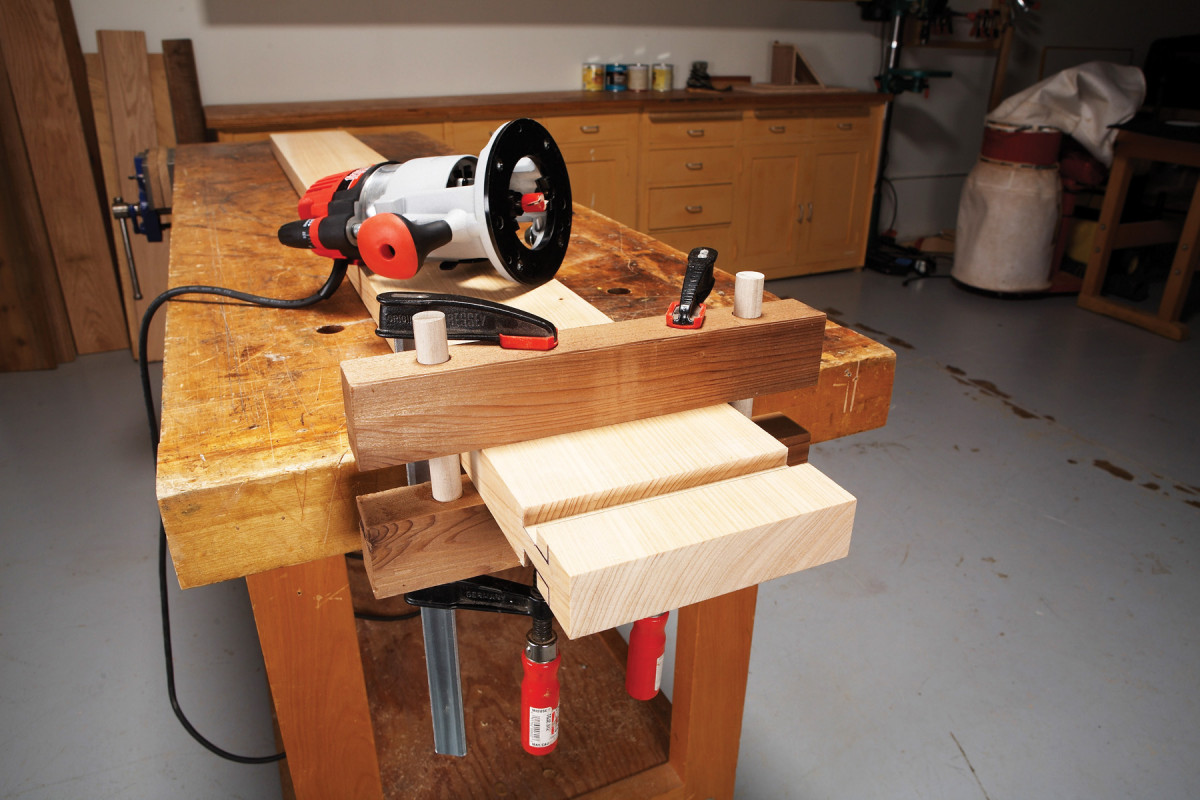 Let’s say you’re building a bed or dining table that requires very long rails. Cutting tenons on those rails can be unwieldy using a tablesaw, but it’s quite easy using a router and a set of parallel guide blocks. The guide blocks are just two large pieces of wood connected by a pair of alignment pins.
Let’s say you’re building a bed or dining table that requires very long rails. Cutting tenons on those rails can be unwieldy using a tablesaw, but it’s quite easy using a router and a set of parallel guide blocks. The guide blocks are just two large pieces of wood connected by a pair of alignment pins.
Cut your rails an inch or two longer than their final length. (The extra wood will support the router, preventing it from tipping.) Install a 1/2-in. dia. bit in your router and measure how far it cuts from the edge of the router’s baseplate. Mark the tenons, then clamp the guide blocks onto the rail. Make sure they’re square to the rail and set back the correct distance from the tenon’s shoulder.
You’re all set to rout both sides of the rail. Adjust the bit’s cutting depth to 1/16-in. less than the final depth you’ll need. Make a pass on both sides of the board, measure the thickness of the tenon, and gradually lower the bit until the tenon is the correct thickness. To cut the rest of the tenon’s width, unclamp the guide boards, move them closer to the rail’s end, re-clamp them, and rout another pass. Cut off the waste when you’re done.
Align Holes For A New Baseplate
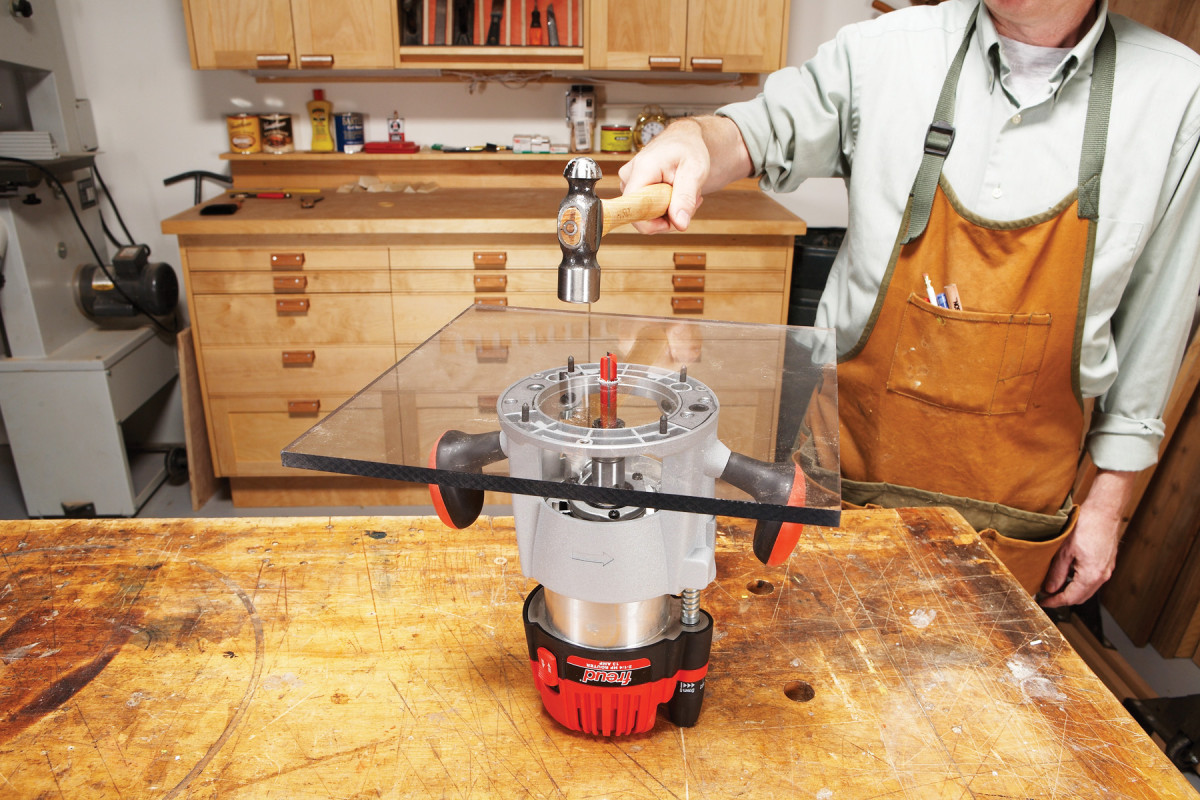 Additional baseplates for your router can really come in handy–for spanning a wide distance, for example, or for use as an insert in a router table. Drilling the screw holes for fastening the baseplate to your router is a precision job, though, particularly if you want the bit to be located exactly in the center.
Additional baseplates for your router can really come in handy–for spanning a wide distance, for example, or for use as an insert in a router table. Drilling the screw holes for fastening the baseplate to your router is a precision job, though, particularly if you want the bit to be located exactly in the center.
Special cone-pointed setscrews make the job easy (see Source, below). They come in various thread sizes; determine what you need by taking your baseplate screws to the hardware store and matching them with an appropriate nut.
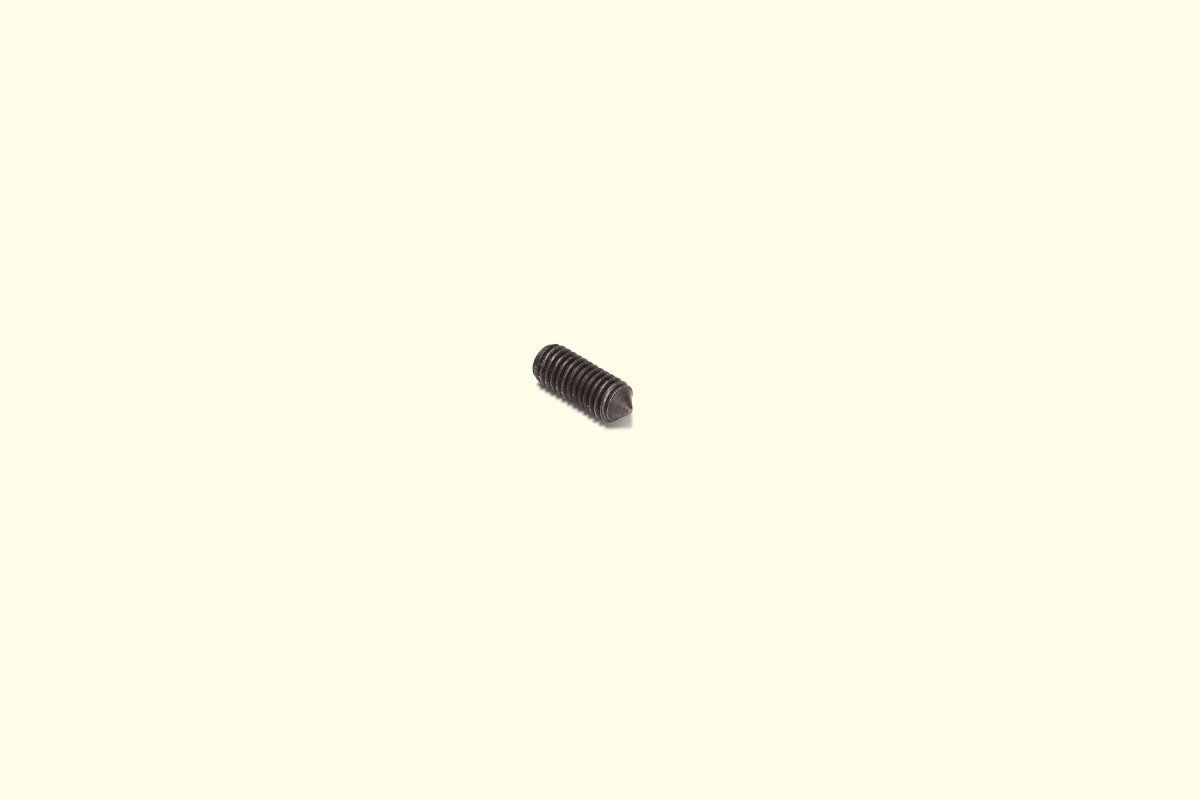 To center your baseplate, draw diagonal lines from corner to corner and drill a 1/4-in. hole where the lines meet. Chuck a 1/4-in. bit in your router. Install the pointed setscrews in your router base and slide the new baseplate over the bit. Tap the baseplate above each screw to make a dimple for centering a drill bit.
To center your baseplate, draw diagonal lines from corner to corner and drill a 1/4-in. hole where the lines meet. Chuck a 1/4-in. bit in your router. Install the pointed setscrews in your router base and slide the new baseplate over the bit. Tap the baseplate above each screw to make a dimple for centering a drill bit.
Ramp-Up For Easier Starts
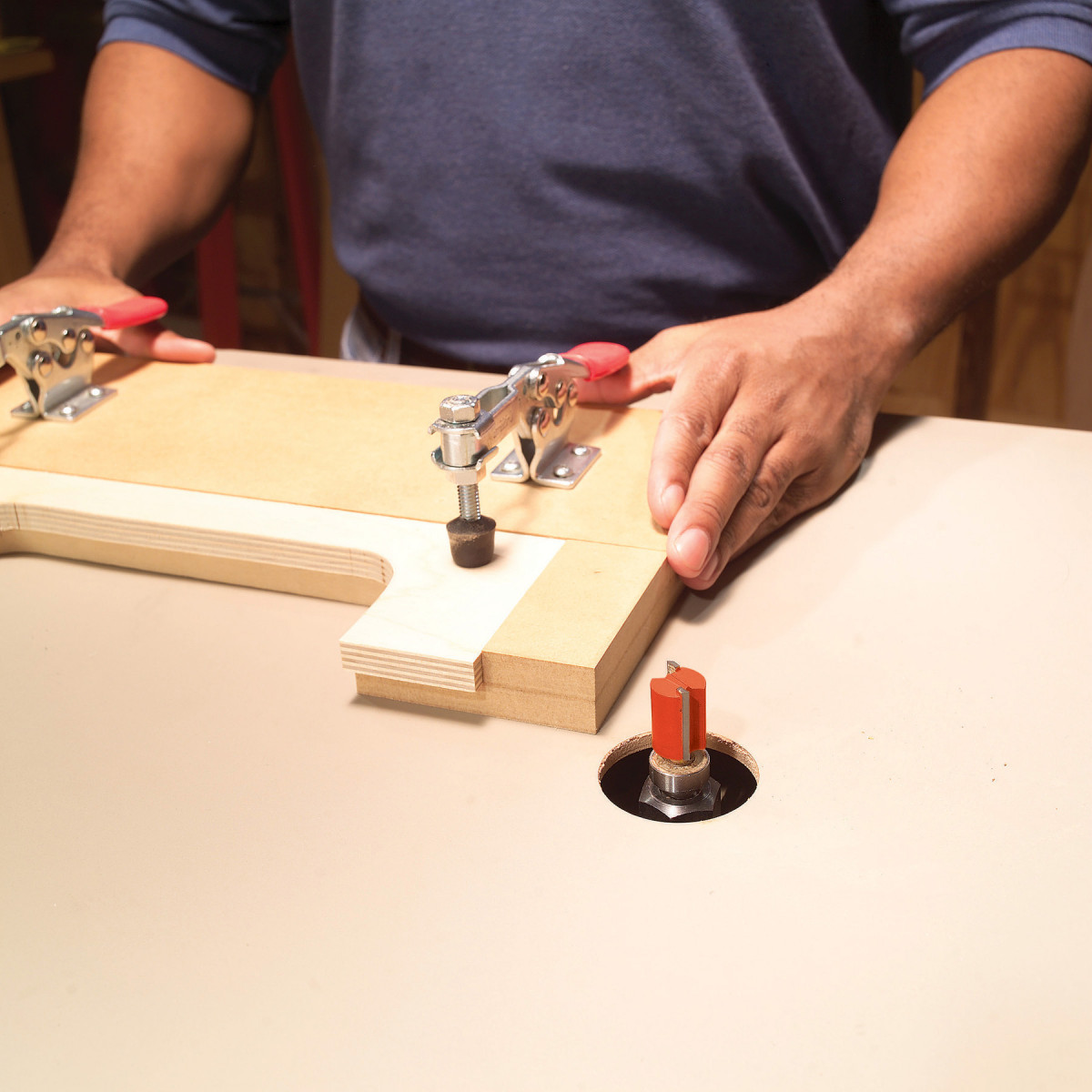 Next time you make a template for pattern routing, be sure to include a starting ramp. This provides a safe place for the router bit to contact the template before it starts cutting. Add an exit ramp on the far end of the template, too.
Next time you make a template for pattern routing, be sure to include a starting ramp. This provides a safe place for the router bit to contact the template before it starts cutting. Add an exit ramp on the far end of the template, too.
Plug-Trimming Router Base
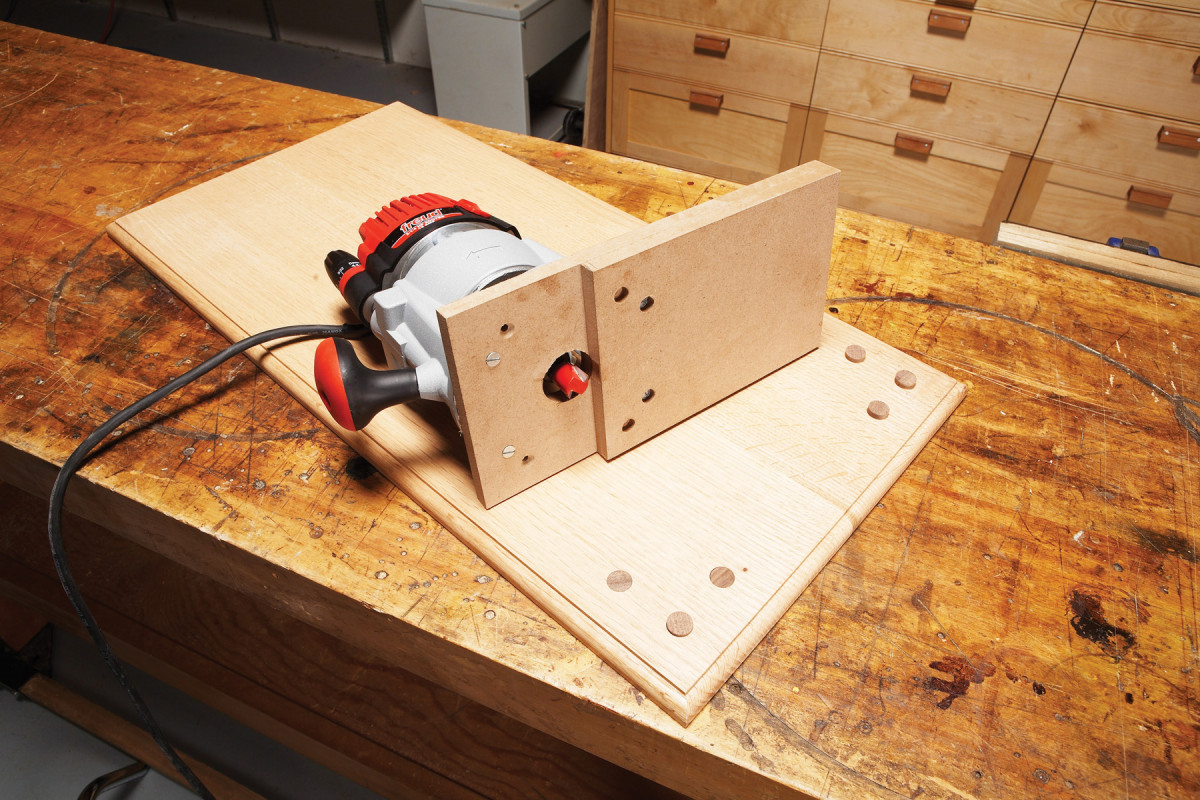 Here’s a fast way to level screw-hole plugs. Make a new baseplate for your router using two pieces of 1/2-in. plywood or fiberboard. Adjust your router bit so it cuts a paper-thickness above the bottom of the baseplate, then trim the plugs. To make the plugs absolutely flush, sand them with a small piece of sandpaper wrapped around a hard block.
Here’s a fast way to level screw-hole plugs. Make a new baseplate for your router using two pieces of 1/2-in. plywood or fiberboard. Adjust your router bit so it cuts a paper-thickness above the bottom of the baseplate, then trim the plugs. To make the plugs absolutely flush, sand them with a small piece of sandpaper wrapped around a hard block.
Box Fence For Big Bits
A large raised-panel bit should be treated with a certain amount of respect. Not only do you have to slow your router way down, to reduce the speed of the bit’s outermost tips, but you’ve got to watch your fingers, too. Here’s a custom-made fence that will make this operation much less scary.
This fence is really just a large box with a plastic top and dust port, clamped to your router table. There’s a faceboard attached to the box’s front end that is adjustable up or down. Set it so that it bears down on your panel, like a featherboard, to produce a smooth cut.
Sandwich Clamps
Use a double-sided template to avoid tearout on a curved piece. By simply turning the template over, you can always cut downhill, following the wood’s grain direction.
No-Fuss Mortising Jig
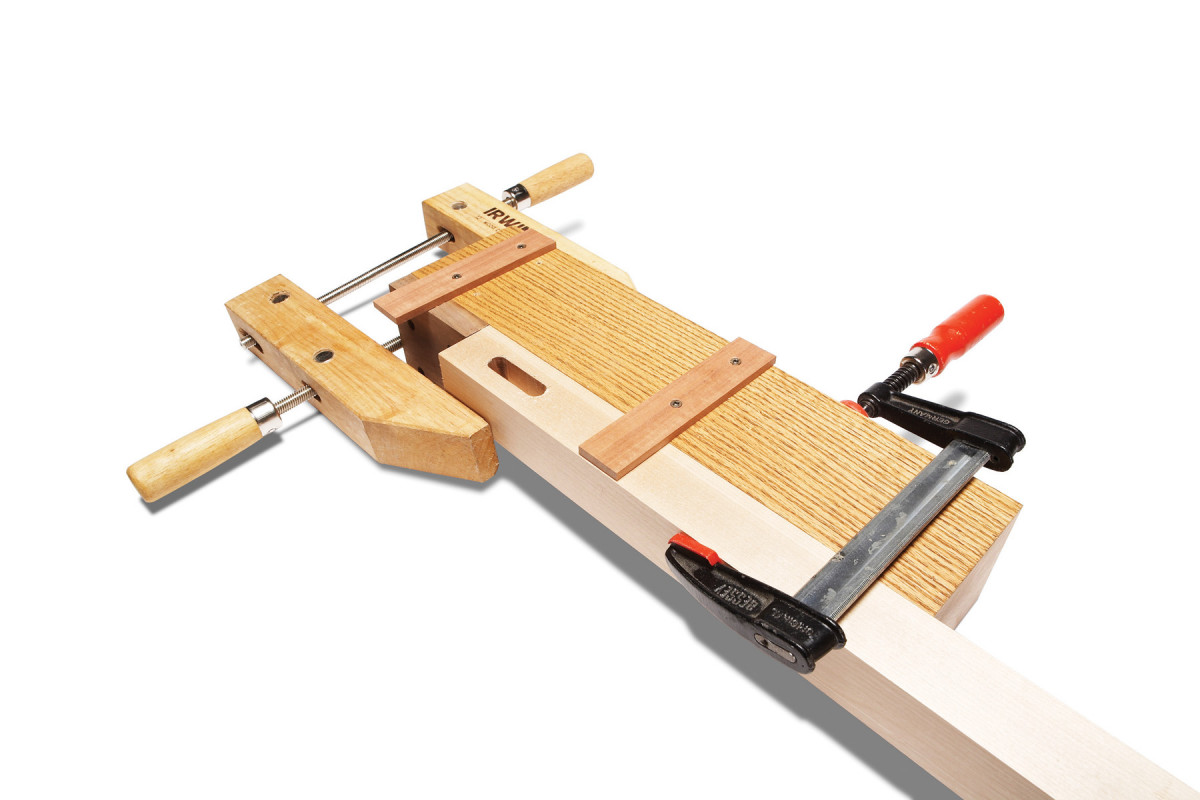 Want a dirt-simple mortising jig? This one just takes a few minutes to put together, not the whole weekend. You’ll need an edge guide for your plunge router.
Want a dirt-simple mortising jig? This one just takes a few minutes to put together, not the whole weekend. You’ll need an edge guide for your plunge router.
First, clamp a 3-to 4-in. square block to your bench. Fasten a 5-in.-long stop block to its side, near one end. Butt your workpiece up to the stop block and clamp your workpiece to the large block. (A large handscrew is ideal for this job because it has a deep reach.)
Lay out your mortise on the workpiece and adjust the router’s edge guide so the bit cuts within the layout marks. Finally, add two stop blocks on top of the big block to limit the back-and-forth movement of your router. These blocks define the mortise’s length. If your mortises are centered, go ahead and cut all of them. If they’re offset, simply change the fence setting as needed.
Sources
- Freud bits in various sizes. Shop Now
- 4ft t-track (pack of 2) Shop Now
- T-track clampsShop Now
- Cone Point Socket Set ScrewsShop Now
Here are some supplies and tools we find essential in our everyday work around the shop. We may receive a commission from sales referred by our links; however, we have carefully selected these products for their usefulness and quality.



 Use your tablesaw or bandsaw to remove most of the waste before you rout. Your chamfer bit will perform best when it’s only removing a small amount of wood. • Cut your router table’s fences to make a zero-clearance opening around the bit. This prevents the workpiece from tipping into the bit as you cut.
Use your tablesaw or bandsaw to remove most of the waste before you rout. Your chamfer bit will perform best when it’s only removing a small amount of wood. • Cut your router table’s fences to make a zero-clearance opening around the bit. This prevents the workpiece from tipping into the bit as you cut.




